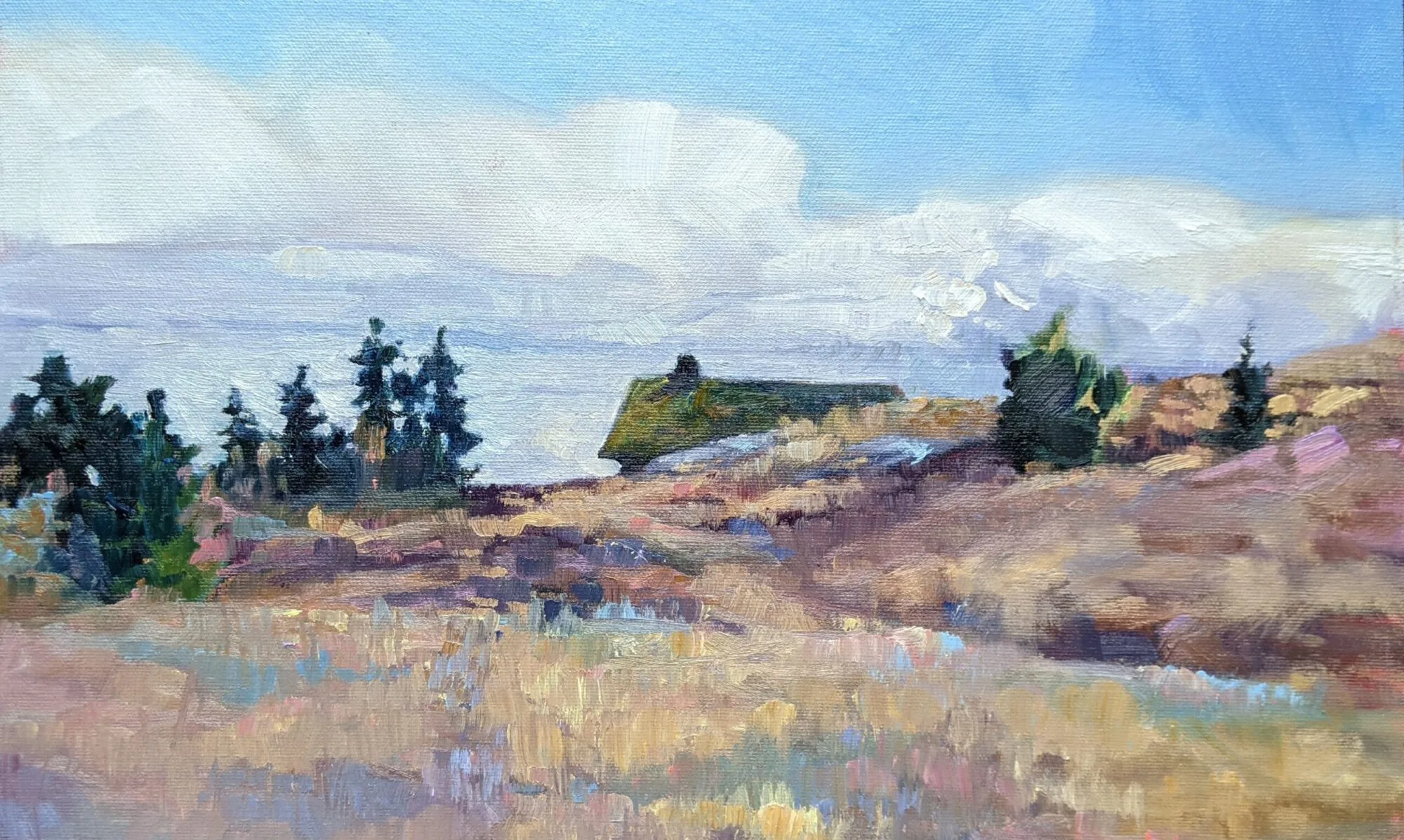It’s an iconic New England painting, and it’s fun to imagine with your friends in it.
 |
|
Sea Captains Carousing in Surinam, oil on bed ticking, 1755, John Greenwood, courtesy St. Louis Art Museum. Greenwood painted himself in the doorway, leaving with a candle.
|
Last night I had a glass of wine with my pal Cathy. She doesn’t want to learn to paint, but she likes to sail, so she asked me about my Age of Sail workshop aboard the schooner American Eagle. In the way of small towns, her husband knows Captain John Foss, and remarked about what a great story-teller he is. That’s true of sailors in general, but he’s a wry master of the art form.
I got home to this essay about iconic New England paintings. It includes the wonderful Sea Captains Carousing in Surinam, 1755, by John Greenwood. Since moving to Maine I’ve gotten to know a number of sea captains, and even more lobstermen, and it’s wonderful to imagine them in their tricornes, dancing around in this painting.
Sea Captains Carousing is what art historians call a genre painting. These are scenes from everyday life: markets, homes, inns, brothels, churches, streets. Often, they’re moralizing, as in the work of English painter William Hogarth. Those fantastic Flemish and Dutch food paintings? They’re genre paintings, and they instruct us on the transience of luxury and the perils of gluttony.
 |
|
Portrait of Richard Waldron, oil on wood, 1751, John Greenwood, courtesy New England Historical Society
|
Just to be confusing, the word genre also means in painting what it means in other arts—a type of subject matter. In fact, classical art had a hierarchy of genres, formulated by the Italians. It persisted right up to the modern era:
- History, religious and allegorical painting
- Portraits
- Genre paintings
- Landscapes
- Animals
- Still life
Greenwood was raised and trained in the hinterlands of the British Empire (Boston), so he didn’t have the advantages of such classical ideas. Still, he knew there was money in portraits, and he executed hundreds of the things.
Unless they emigrated from England as adults, most of our earliest painters were self-taught. They emulated British styles of painting, which they knew through prints and the works of émigré artists. This was true of both primitive painters like William Jennys or sophisticated artists like John Singleton Copley.
 |
|
John Richard Comyns of Hylands, Essex, with His Daughters, 1775, John Greenwood, courtesy Yale Center for British Art
|
Greenwood had the advantage of an apprenticeship with self-taught engraver Thomas Johnston. In addition to portraits, Greenwood painted many satirical works. Sea Captains Carousing in Surinam is the best known of them. Surinam was a Dutch colony in South America, now the Republic of Suriname. Greenwood lived there for five years, during which time he painted 115 portraits. He never returned to North America, traveling east to Amsterdam, Paris, and London, where he eventually settled.
 |
|
Portrait of the painter Tako Jajo Jelgersma, c. 1750-58, John Greenwood, courtesy Rijksmuseum.
|
The beauty of Sea Captains Carousing is in what its subjects would later become in the history of Rhode Island. In addition to many prominent merchants, it includes Declaration of Independence signatory Stephen Hopkins, Governor Joseph Wanton, Admiral Esek Hopkins, and Governor Nicholas Cooke.
It’s about time for you to consider your summer workshop plans. Join me on the American Eagle, at Acadia National Park, or at Genesee Valley this summer.



